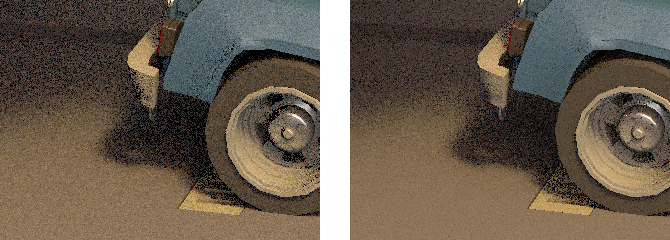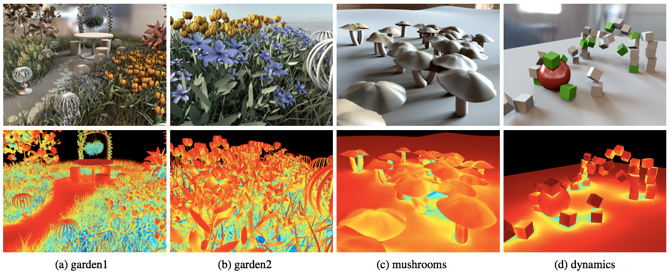in Direct Illumination
Lund University
In Computer Graphics Forum (Proceedings of EGSR 2008), vol. 27(4), pp. 1125-1136.

Equal-time comparison between practical product importance sampling [Clarberg and Akenine-Möller 2008] (left) and our method (right).
Abstract
The visibility function in direct illumination describes the binary visibility over a light source, e.g., an environment map. Intuitively, the visibility is often strongly correlated between nearby locations in time and space, but exploiting this correlation without introducing noticeable errors is a hard problem. In this paper, we first study the statistical characteristics of the visibility function. Then, we propose a robust and unbiased method for using estimated visibility information to improve the quality of Monte Carlo evaluation of direct illumination. Our method is based on the theory of control variates, and it can be used on top of existing state-of-the-art schemes for importance sampling. The visibility estimation is obtained by sparsely sampling and caching the 4D visibility field in a compact bitwise representation. In addition to Monte Carlo rendering, the stored visibility information can be used in a number of other applications, for example, ambient occlusion and lighting design.
Paper
Presentation
![]() vc_slides.pdf (EGSR 2008)
vc_slides.pdf (EGSR 2008)
Video
[ vc_video.mp4 ] (19.7MB QuickTime MPEG-4)
Images

Spatial distribution of distant visibility correlation in four different scenes.

Visibility correlation as a function of distance and relative surface orientation for one of our test scenes. More details are available in the paper.
All material is Copyright © 2007-2008 Petrik Clarberg. All rights reserved.